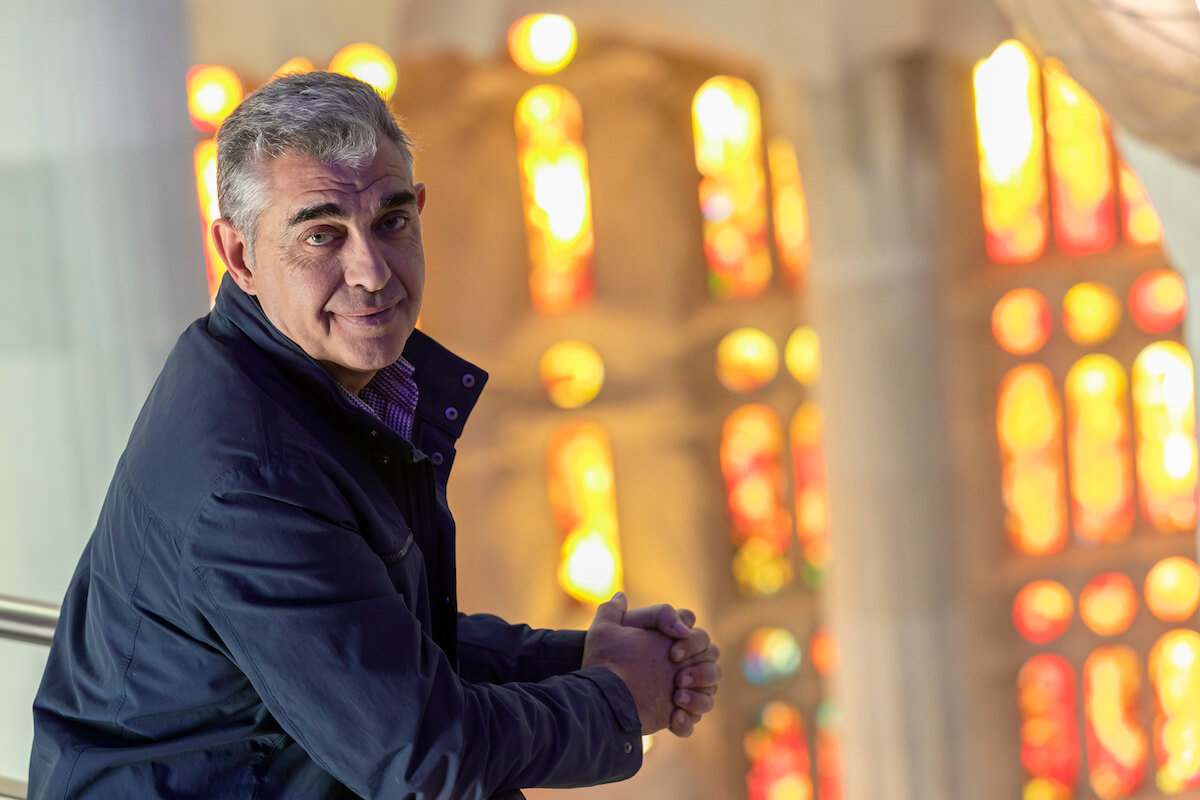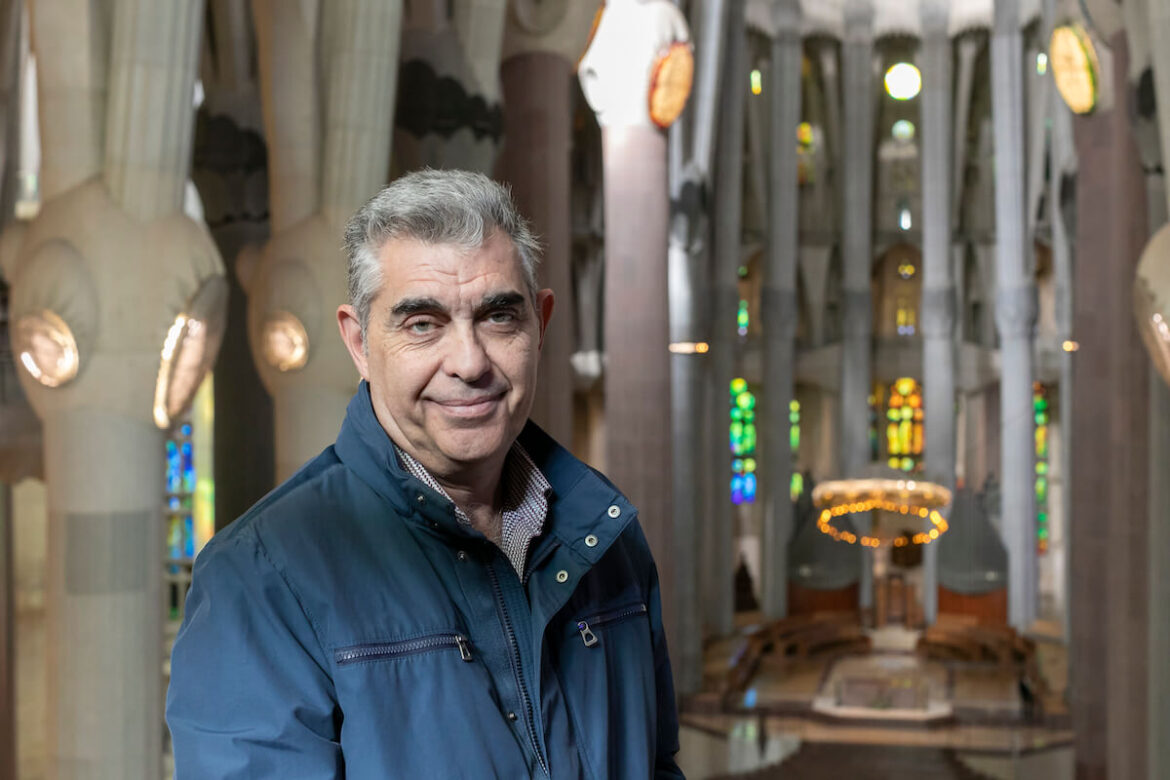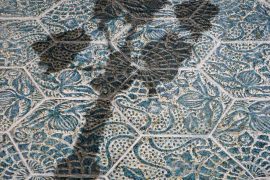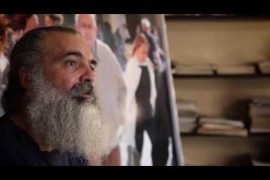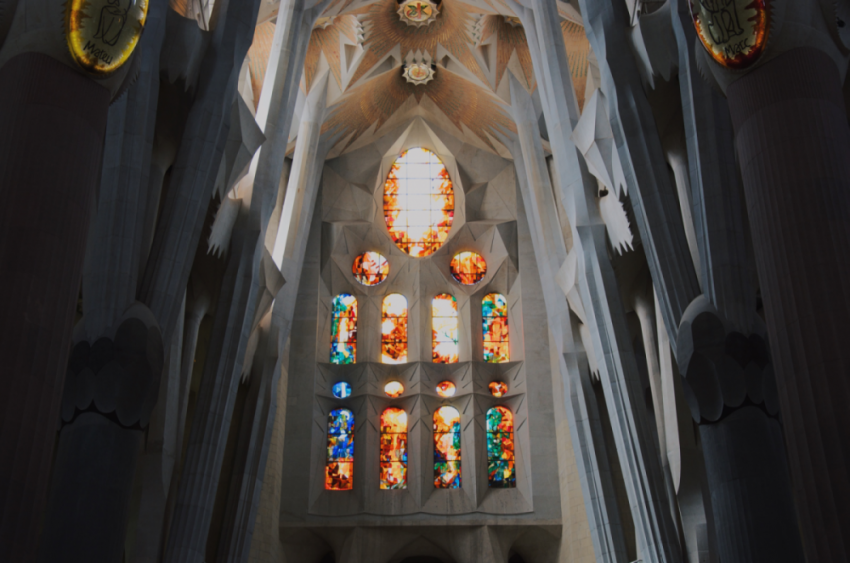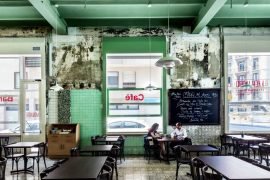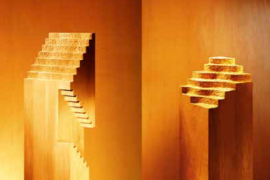Ramon Espel, the Sagrada Família’s construction manager, welcomes us in the sacristy where the offices are located and gives us a guided tour of the temple, which, without losing the technical references, adopts a plain language. No one knows what is going on, what is being projected and, above all, why it is being done.
The Sagrada Família is not a plan, it is a code. It is not a drawing, it is a language. A dictionary. A Bible, written and handed down by those who knew the master.
— Easter Mona.
— Look, the first time I heard this expression I had just started working at the Sagrada Família a few months before and I was very impressed by the temple and the work. Right now I have been working here for 30 years. And I was very surprised by this expression, it was during a program by Joaquim Maria Puyal and the guest was Oriol Bohigas. It made me very angry. I understand that, when it comes to such a big building, such a beast, the public opinion finds names or nicknames for it. It already happened with La Pedrera, which is why it is called La Pedrera, after a nickname. But I don’t see the monkey at all. I see a small Manhattan of the imagination, set in the Eixample, where the sum of the height of all the towers of two kilometers, and where Modernism has evidently an imprint.
— And what is Modernism?
— Well, at that time it was a style of very daring people, very transgressive, paid by a bourgeoisie much more risky than it may sometimes seem. It is that we must place ourselves in that moment! At that time, that architecture did seem crazy, and it was logical that it was the object of mockery and nicknames. But now? What is the point of talking about Easter monkey now, as if we were well accustomed to the conservative neo-Gothic of that time? The crypt was already neo-Gothic: Gaudí was not. Gaudí breaks everything. Certainly, simpler, minimalist and colder forms are now in fashion, but Modernism, and Gaudí, are the history of the city. These people pushed construction techniques to the maximum, as well as the arts, stained glass, forging…. Gaudi raised it to infinity! Therefore, to call it an Easter monkey is not to be modern, it is to be anti-modern. It is to be conservative.
— 2026.
— 2026 was one milestone before the pandemic, and now it is another. That milestone was based on the budget we had, the construction systems, the industrialists of the available stone (95% of the orders they received were ours!). Therefore, a fabric had already been created that made it possible to talk about 2026. The construction systems were already very advanced and allowed for great refinement in terms of quality and rigor, but also in terms of schedule. The date of 2026 could be assumed, except for the sculptural group and the porch. The pandemic brought everything to a halt and made some industrialists unable to hold on, so they disappeared, and we have had to lift the whole fabric again. We are now back at cruising speed.
“Calling it an Easter monkey is not being modern, it’s being anti-modern. It’s being conservative.”
— We will no longer see it.
— Get out of the way, man, we’re young! Now we are back on track: in 2021 the tower of the Virgin Mary will be crowned and in mid-November we will officially hand over the four towers of the Evangelists. And precisely in 2026, which incidentally will be the international year of architecture, we will be able to reach the highest point: the tower of Jesus Christ. Because the Sagrada Família has not stopped, in terms of project, study, research. We were already studying the facade of the Gloria, as well as finishing the study of the cloisters, the chapel of the Assunta and the second sacristy. Therefore, the year 2026 will mark – and so much! And a lot of it! Barcelona’s skyline will already be broken, changed, definitely punctured. Without detracting from the facade of Glory, which will come later. All that will be left is the facade of Glory and we will not be under too much date pressure: we will find it. Apart from the fact that the Gloria is already starting to have its own inertia, such as the extension of the museum, the basements, the foundations…
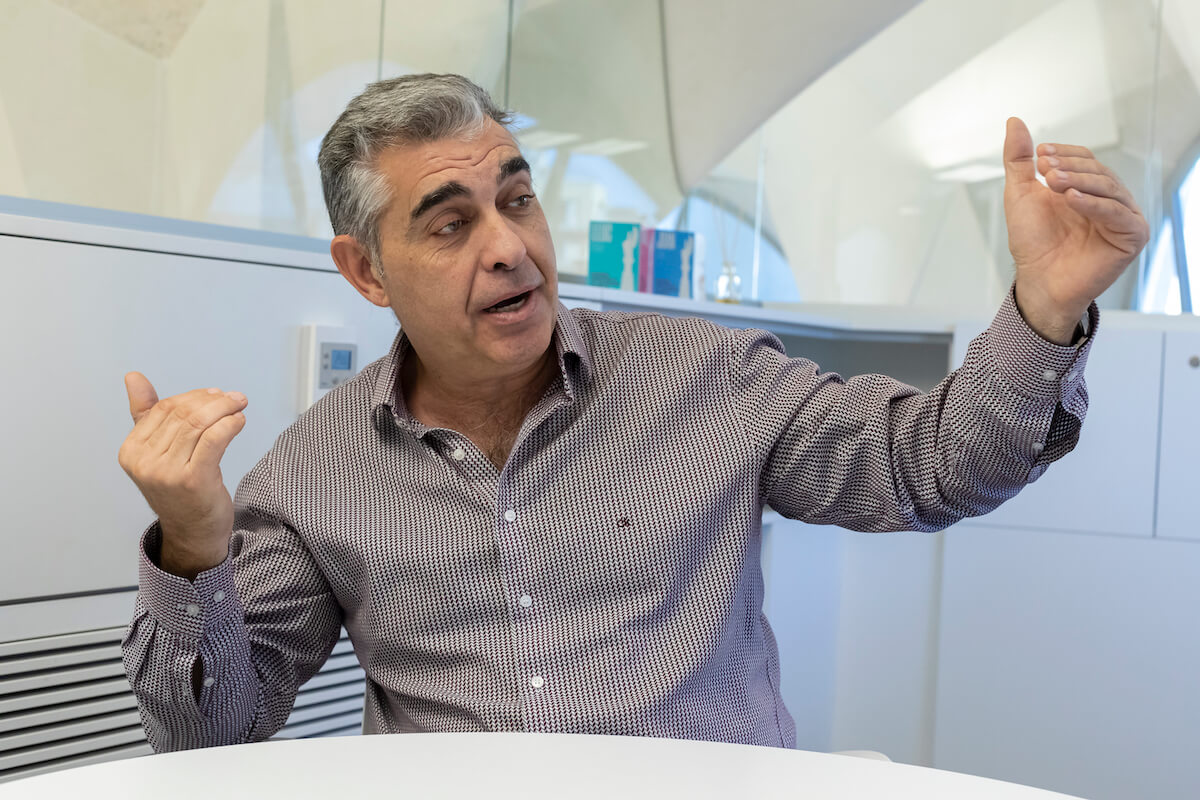
— Miquel Barceló.
— Here I just tell you that any artist would be proud to be commissioned a part of the Sagrada Família, such as the facade of the Gloria. Whether he was asked or not, which I can’t tell you, it’s a great showcase for any artist. But it all depends on the character and projection of each artist, of course. Everything is respectable. Gaudí said that he would not finish the temple, but that he would leave it in such a way that the new generations could bring almost all the styles of the future and could adapt to its codes. The Sagrada Família is a great museum of the history of artistic styles.
— Criticism of the sculpture of Sant Mateu.
— I haven’t seen any sour reviews, frankly. Gaudí designed the terminals of the towers and we are accustomed to that iconic, abstract form, but which in truth represents croziers and bishop’s rings. That super-revolutionary form to which we are accustomed, when it is complemented not only by a star of Mary but now by four figurative statues with white wings, clearer and more explicit, I understand that it can be impressive. But it’s all in Gaudi’s plans. In fact, if we talk about it, it’s because it’s important: you move something of the Sagrada Família and it’s like touching a tooth for all of us, it’s sensitive material. But everything is written, these statues are written and planned, although Gaudí did not write a single book: his disciples did, through the observations of the master. Yes, like Jesus.
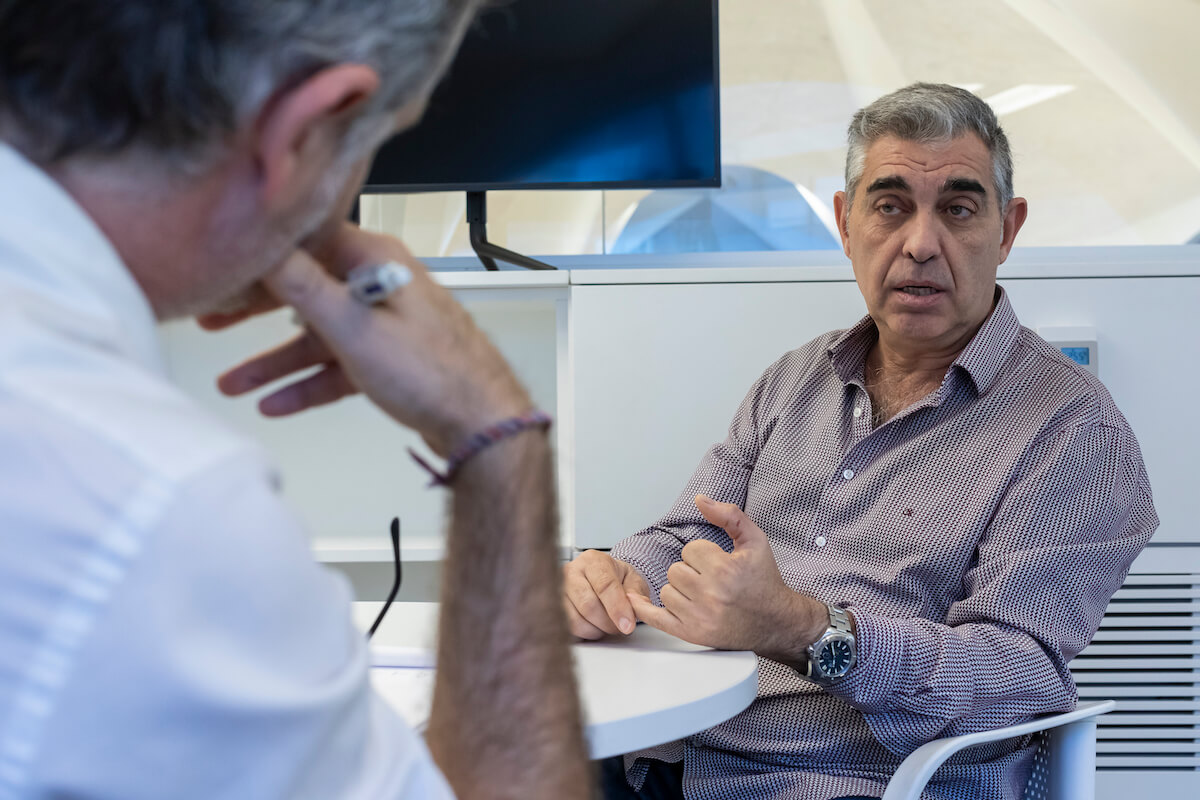
— Gaudí.
— We did not invent anything. It is true that in the year 36 many plans of Gaudí’s studio were burned. During his lifetime he already had a perception that it was too difficult to capture the Sagrada Família on a flat plane, because the concept is very three-dimensional. This already happened to him in La Pedrera: from a plaster sculpture he moved on to architecture, under the promise of the absence of any straight line. But the thing is that the Pedrera I could model it every day, I would go there and find the worker of the green trencadissos and I would take a green piece. I was doing, like a sculptor: I had to be there! So, what would happen to the Sagrada Família when he was gone? If he is in fact a sculptor, a craftsman, and he also works in an amorphous way, discovering natural forms, interpreting nature, how shall we do it? This is where he begins to work on a regulated surface so that it helps his disciples to follow a code. For example, that sacristy where we are now, that pineapple, he left it very detailed. And, if we were to stretch it upwards, it would be like one of the towers.
“During his lifetime, Gaudí already had a perception that capturing the Sagrada Família in plan was too difficult.”
— You do not respect Gaudí.
— On the contrary. Gaudí leaves the project of the temple very advanced with respect to what he will no longer see. There are few plans, true, but he is more of a model maker! The archive burns, the crypt burns, the scaffolding of the bell towers burns, and the models are smashed to pieces. But then the disciples do something miraculous: they hang these pieces of models on the ground and, at the same time, they deposit the foundation’s funds in a London bank. A few years later, they return to the site and dig up the pieces. To start doing puzzles. Now, it is true that if you have three parabolic shapes that are not in the model, what you will have to do is to fill this gap through the codes and methods set. For example, the 60-meter vault of the transept had to be designed from scratch, but there was only one possible geometric shape to fit all the angles!
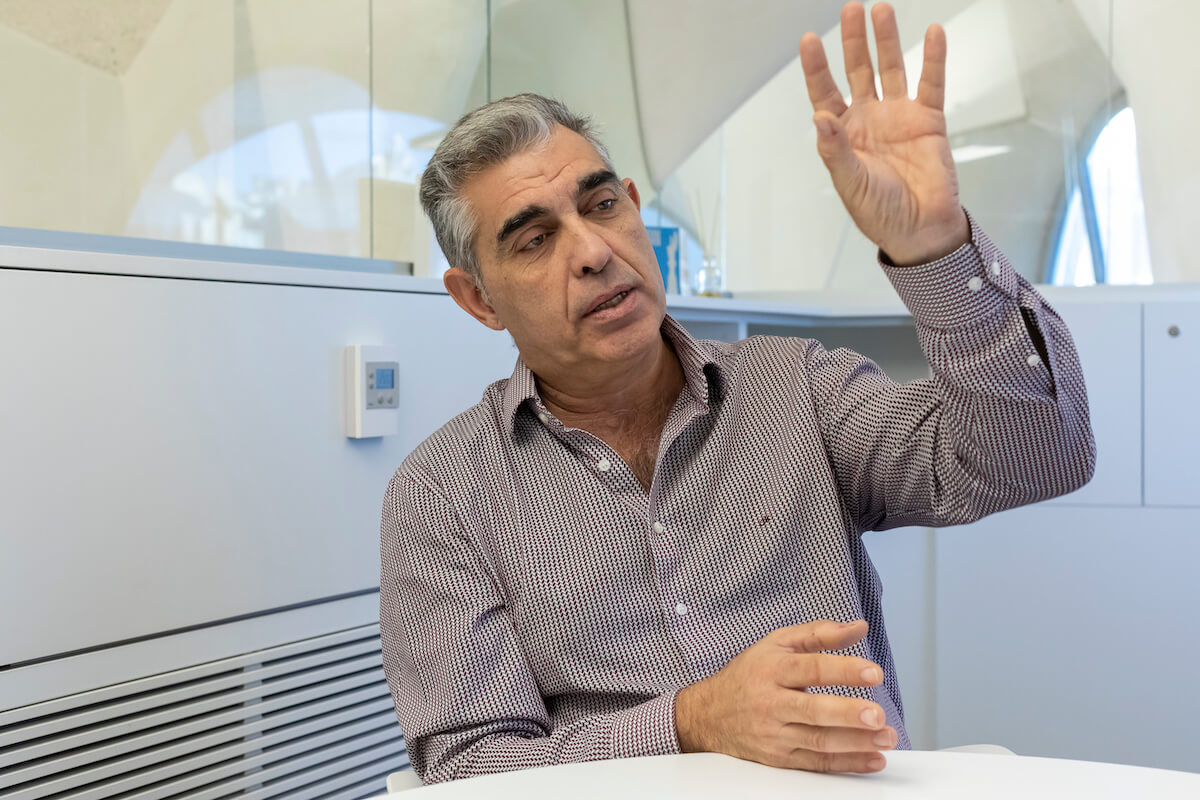
— Faves comptades, pues.
— Faves comptades, exactly.
— Subirachs.
— Subirachs was, above all, a great co-worker. With zero desire for prominence, just one of us. He lived here and was a very simple person. As for the Passion façade, when you understand it, it’s hats off. “Criticize me when I’m done!” he exclaimed. In fact, if the Nativity façade is the most monumental nativity scene in the world, the Passion was already planned by Gaudí to be cold and raw. And Subirachs’ type of sculpture fit with this. Therefore, Subirachs’ respect for Gaudí has been demonstrated (leaving aside the chimney-helmets, the figure of Gaudí himself sculpted on the façade according to a photo of him during the Corpus Christi ceremony…).
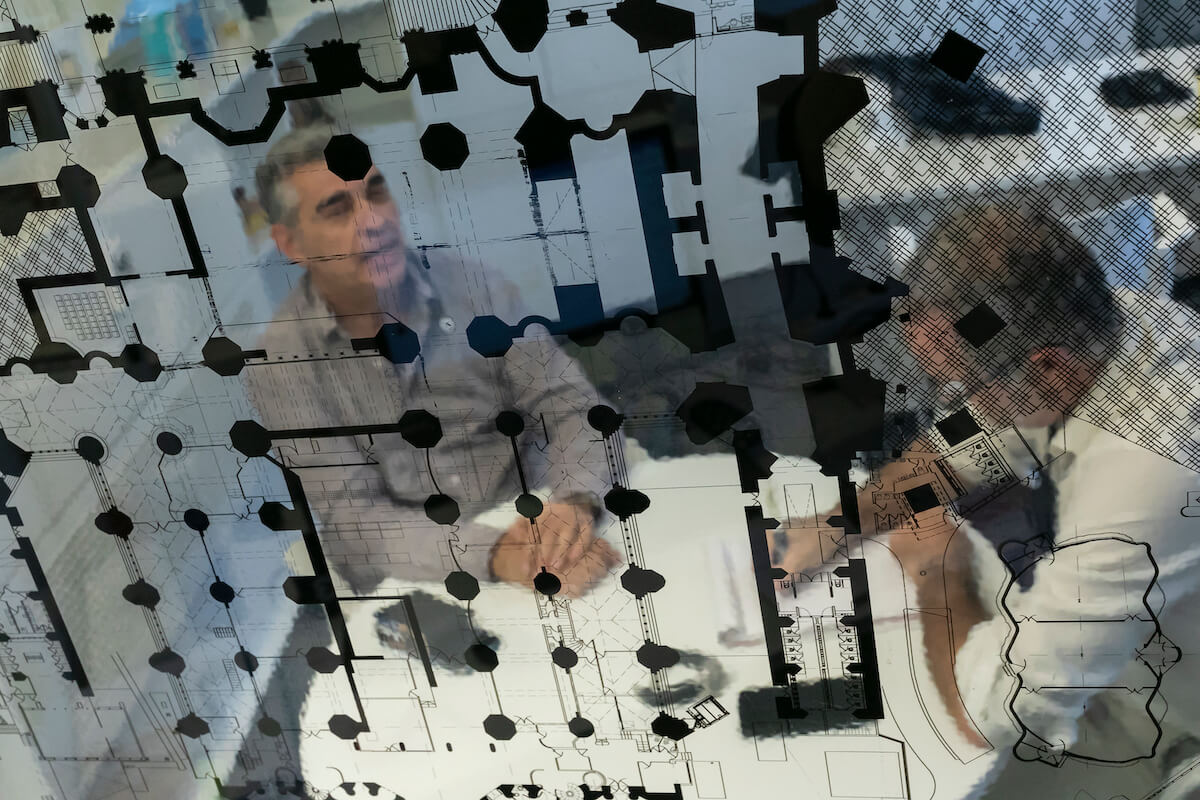
— Too many colors.
— You must say that because the new figures of the evangelists are very white: yes, the marble of Thassos is the whitest in the world, and it was chosen so that these figures would have an entity. There is a concept that many people do not keep in mind, and it is normal: right now the existing background is the blue of the sky, which makes this white marble stand out a lot. But in 2026, the bottom will be stone, i.e. the tower of Jesus Christ! So these winged sculptures will be less prominent, and it is important to ensure that they do not fade too much. Haven’t you noticed that in the Sagrada Família there is no blue color?
— No.
— Check out the iconic towers, spikes, staffs and abstract bishop’s rings. There is no blue, there are primary colors such as red or yellow, but no blue. Gaudí had it very much in mind, why resort to blue, if we live in the Mediterranean? Why use blue, if blue is already in the sky?
